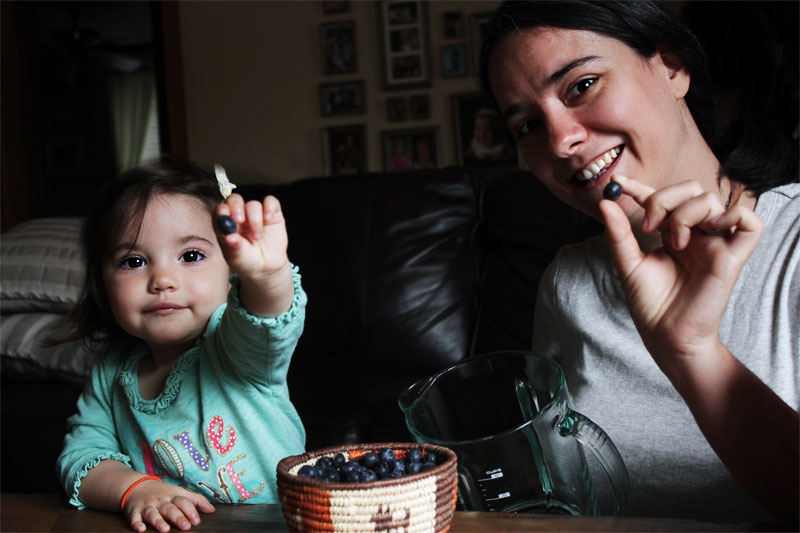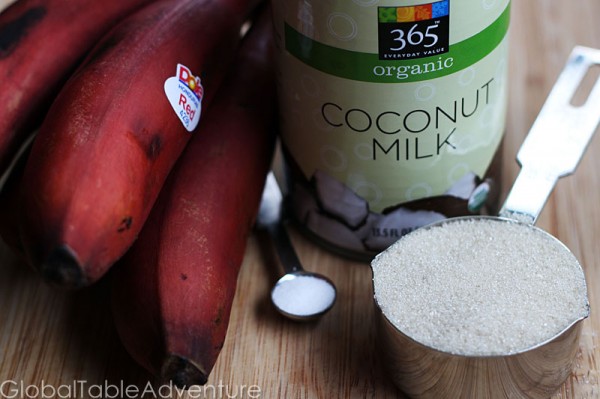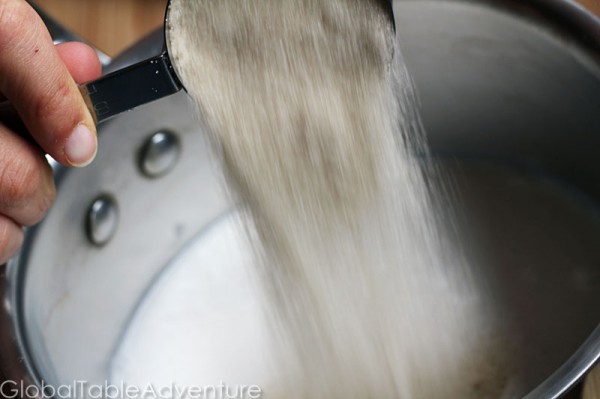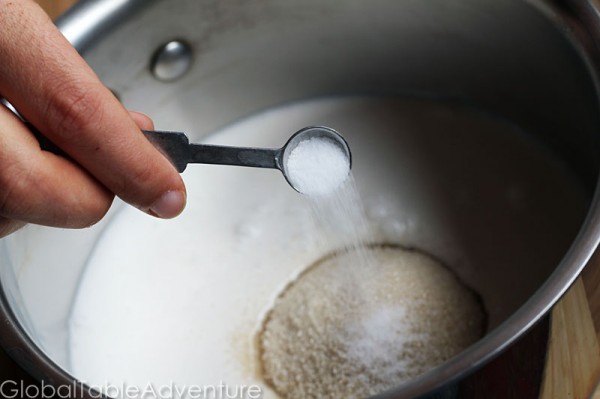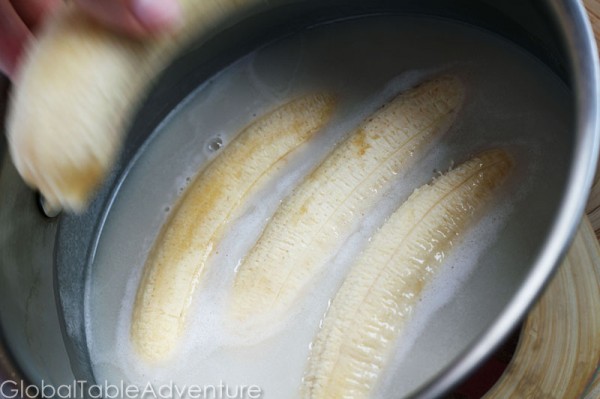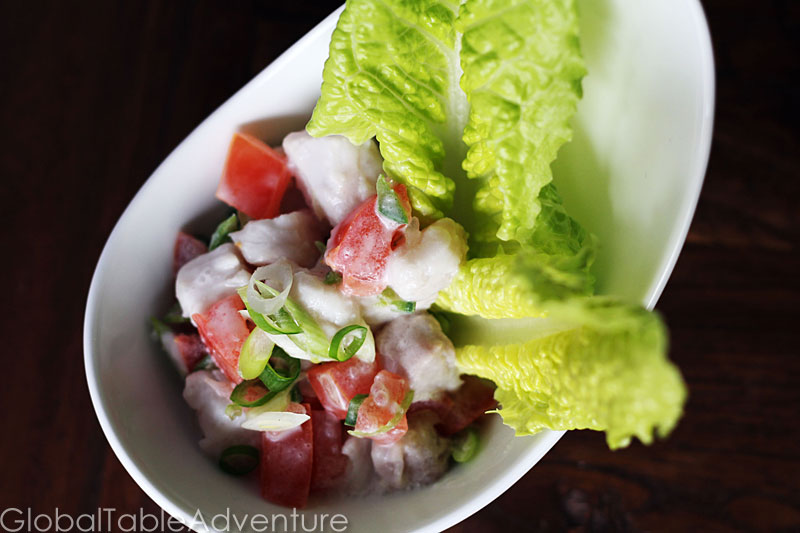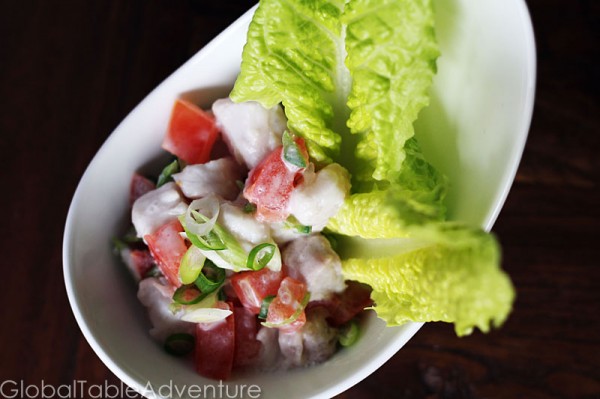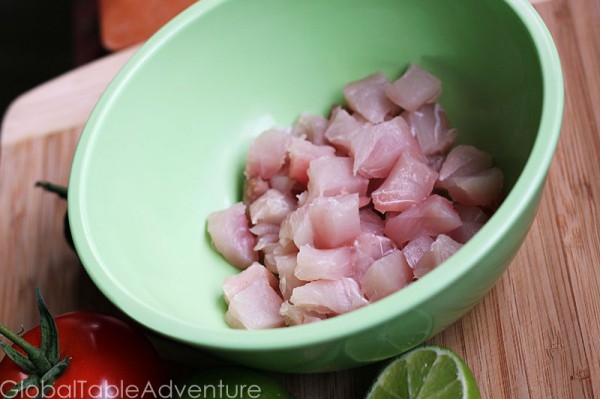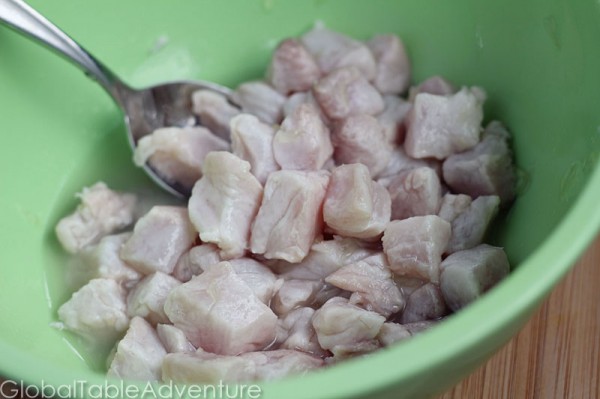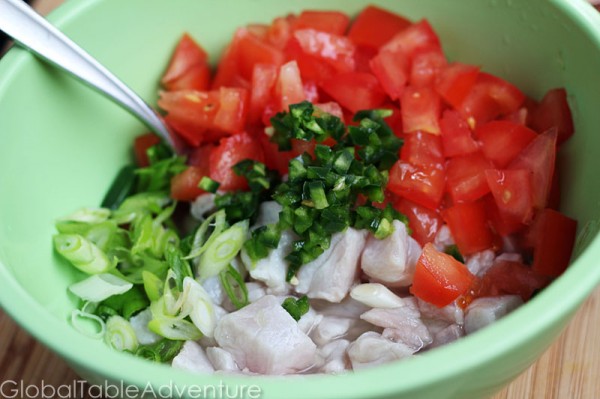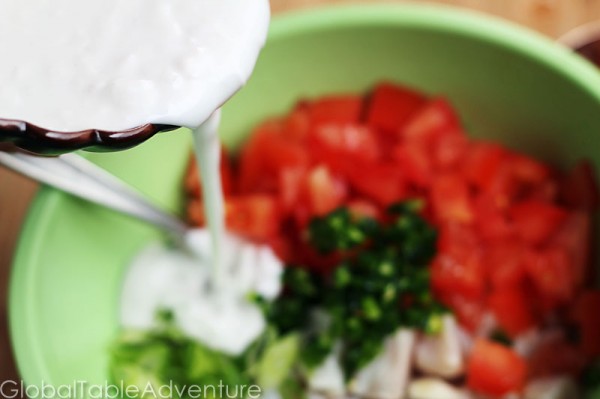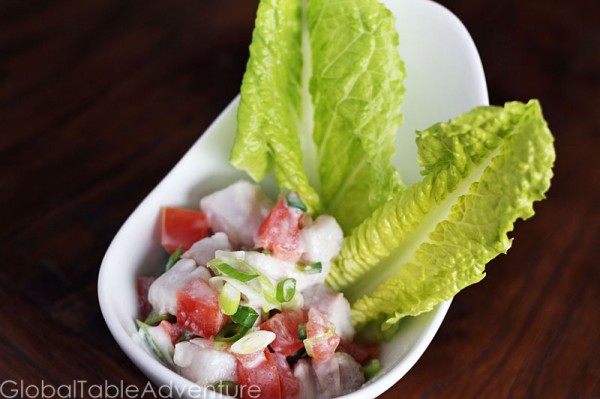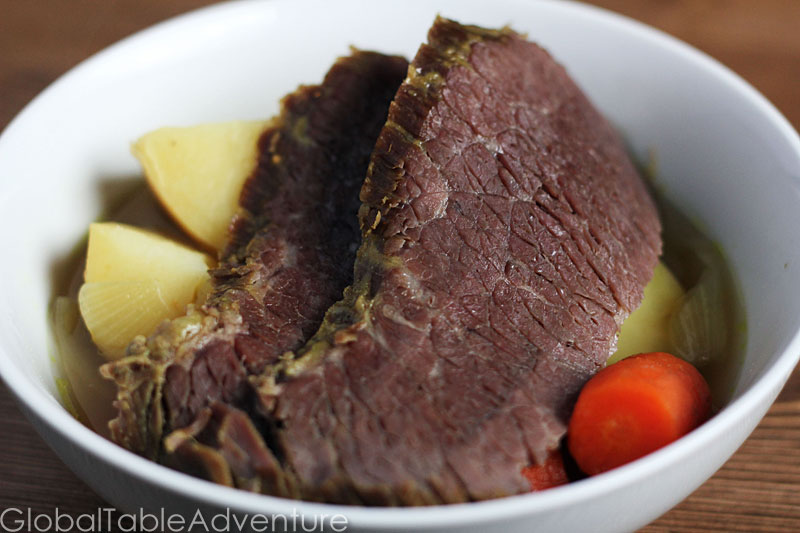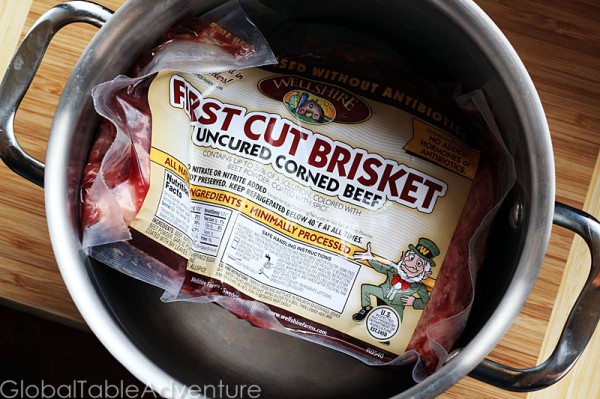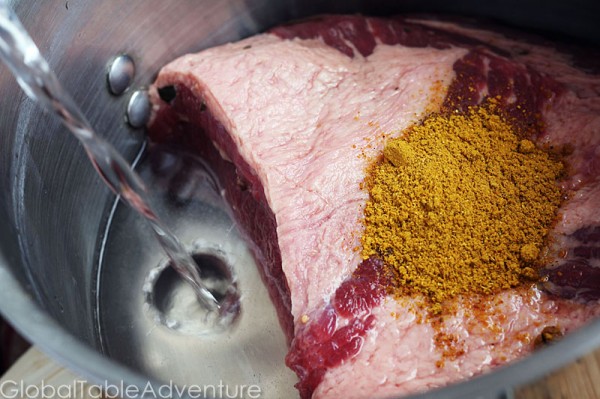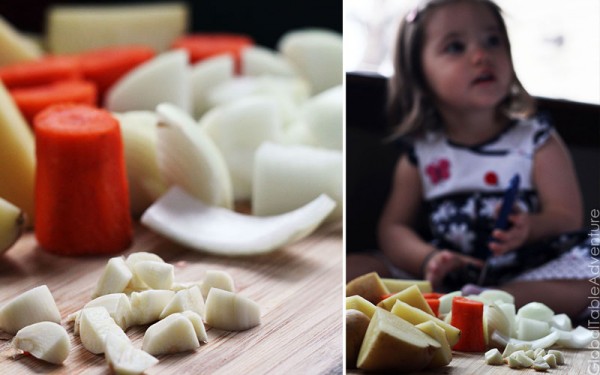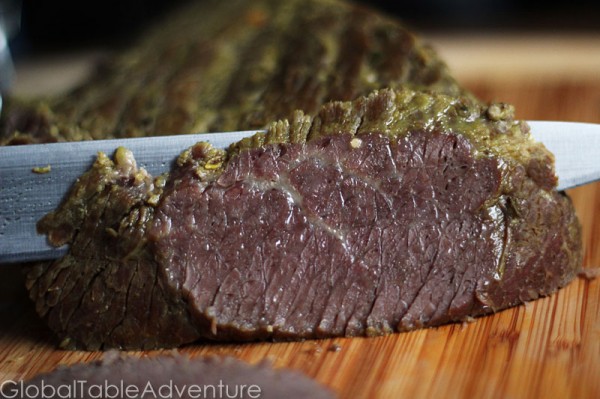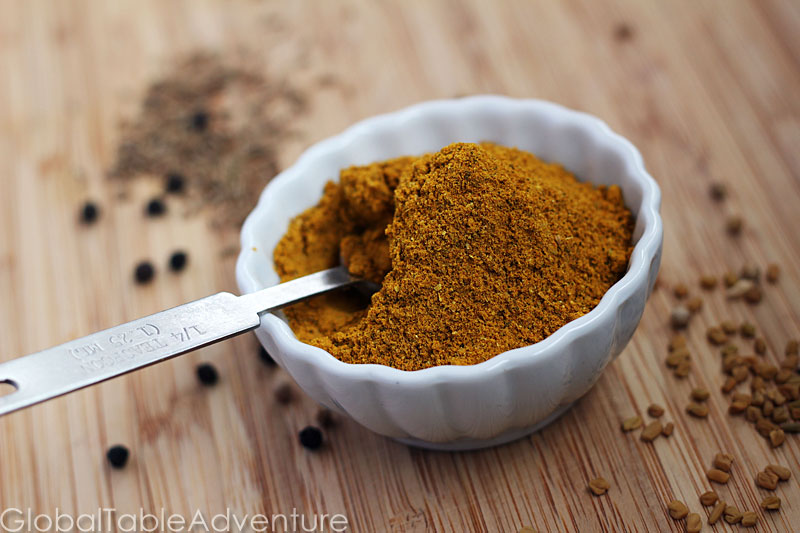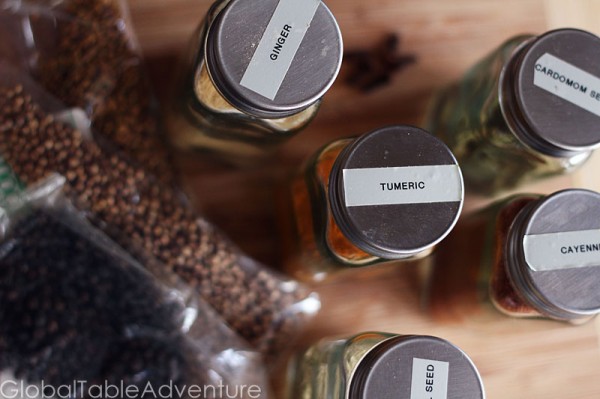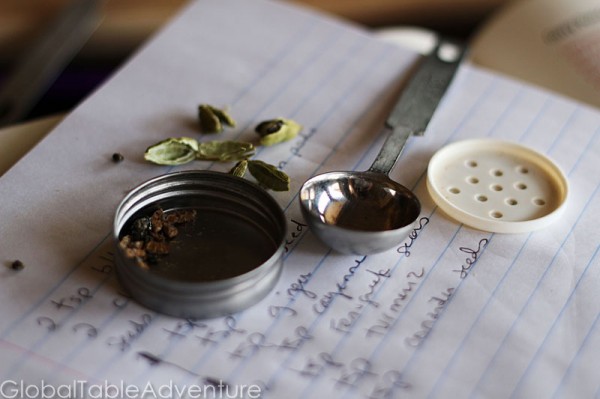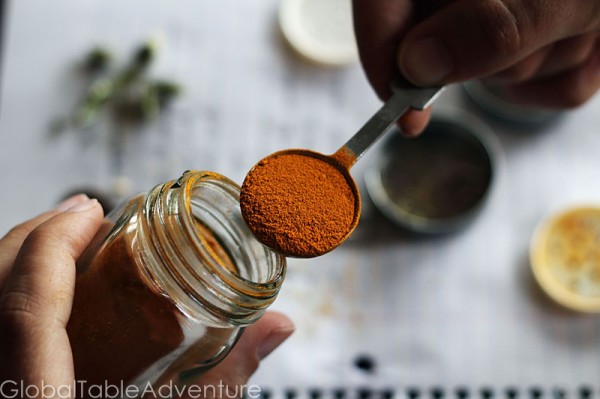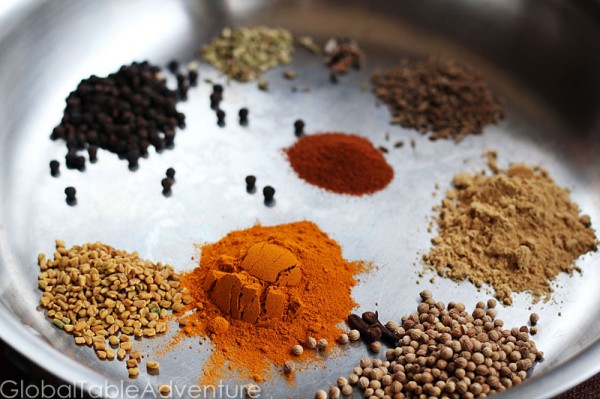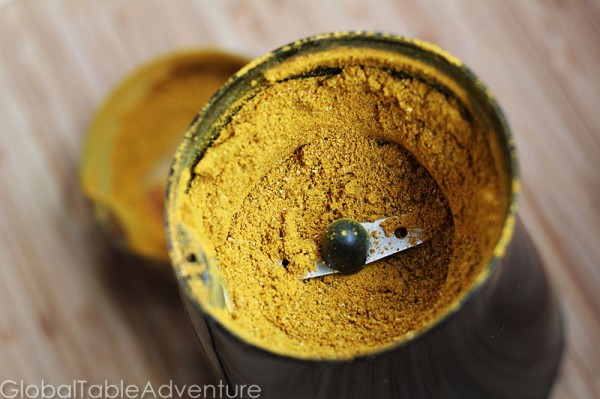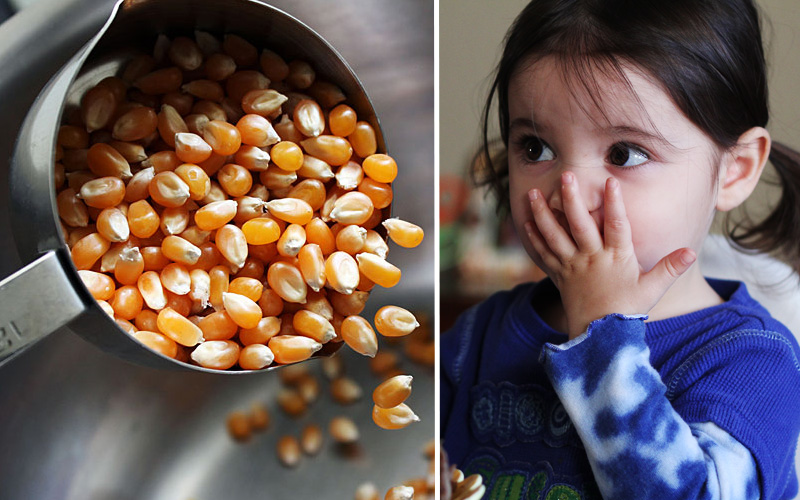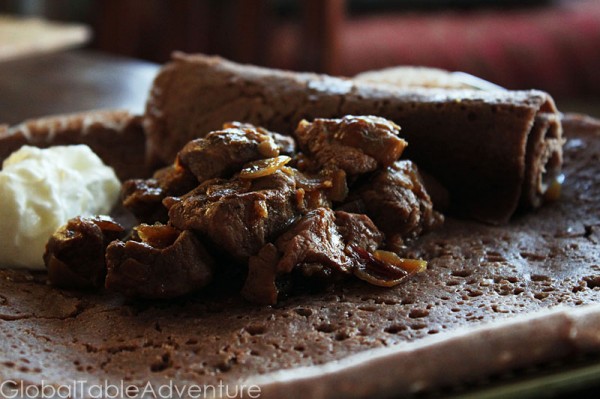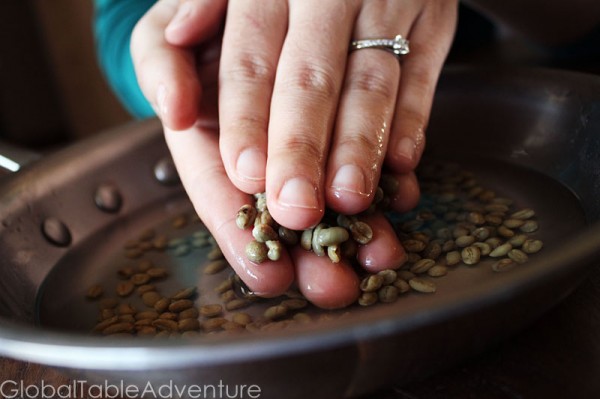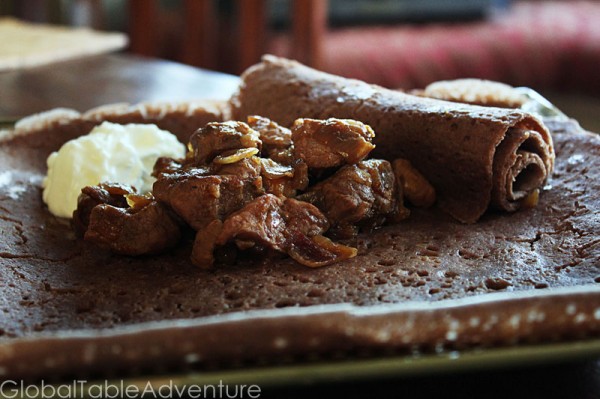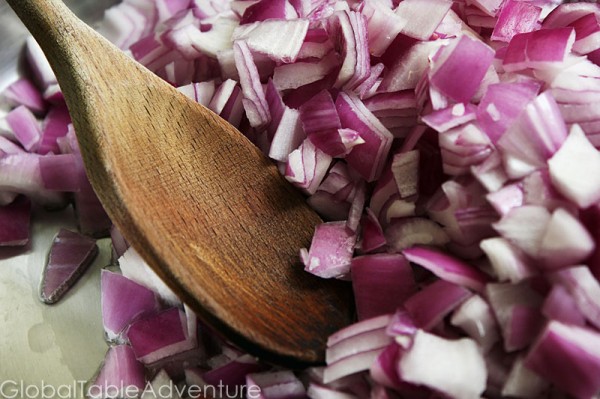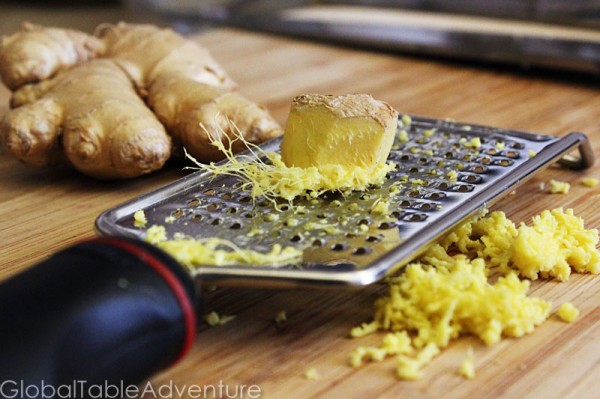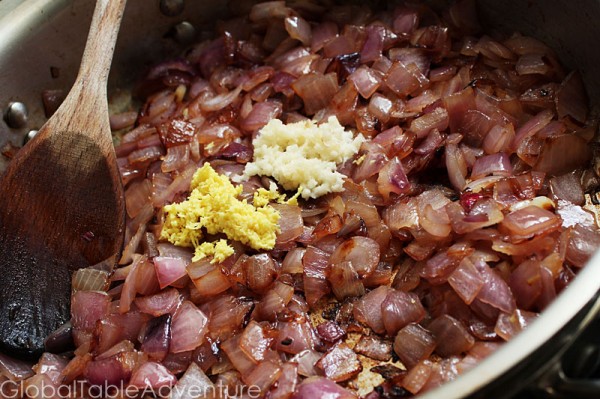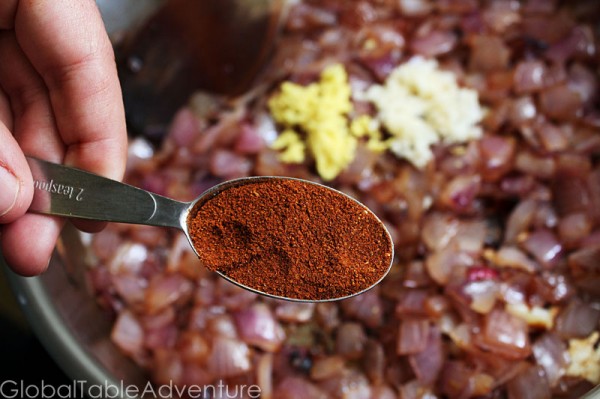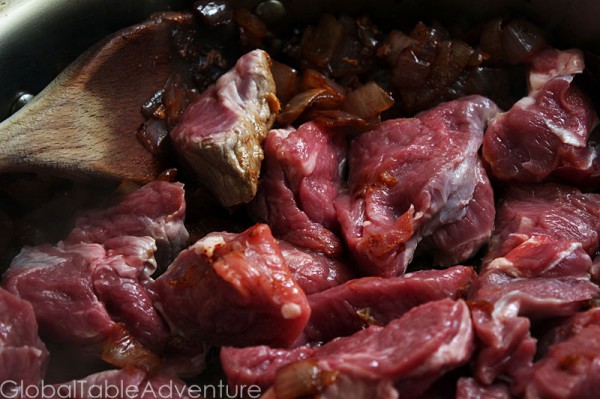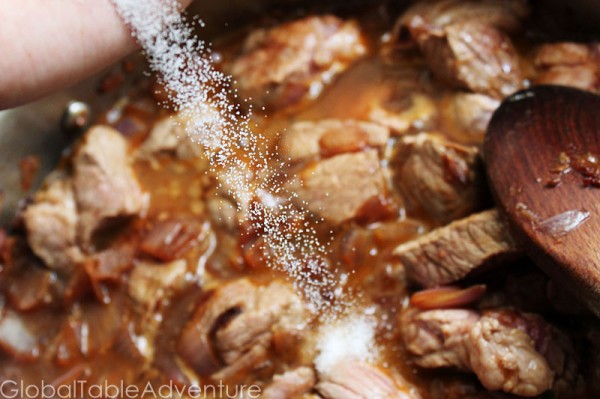
Mr Picky contemplates his first bite of Kokoda
THE SCENE:
I knew it was time but I secretly hoped to fail.
“Can I help you?” the fishmonger asked.
He was bright eyed and eager. His apron was starched.
“I am making ceviche and need a very fresh piece of Mahi-Mahi.”
Please, oh please, I thought, scanning the fish case. Please let him say they don’t have any.
“We don’t carry sushi-grade fish,” he said, shaking his head. He looked genuinely disappointed.
“Oh, ok. Well, thanks anyway”
I turned on my heel, giving Ava a little wink. But, before I could step away, another voice called out – “You don’t need sushi-grade fish to make ceviche.”
I cautiously looked back over my shoulder.
His name tag said Josh. He was a little scruffier than the first guy, maybe a few years older, and he was definitely not wet behind the ears. I turned to face him.
He repeated himself “You don’t need sushi-grade fish to make ceviche. You just need really fresh fish.”
He picked up a slab of mahi mahi and brought it right up to his nose. He took a long, drawn out whiff. He must have been smelling that thing for a good five seconds… which, if you’ve never done it, is a long time to smell a piece of raw fish – no matter how fresh it is.
“This’ll do just fine.” he said. “The lime cooks it anyway. Want me to skin it and remove the bloodline? ”
I nodded grimly.
“Sure,” I said, “but can you give me maybe … half that amount?”
And there it was. I hadn’t failed. I saw my destiny unfurl before me. That same day I would take my first bite of ceviche. Possibly, just possibly, my life would change forever. Or I would get food poisoning.
That first bite was vibrant and soft – simple, really. Immediately, my mouth felt the assault of tart lime juice, but in the next moment was healed by the salve-like coconut milk. With each taste I became more perplexed. This dish was so tropical. So different. It felt like a dance I didn’t know the moves to. The dull grey day outside seemed wrong somehow. And so did my attitude.
Sometimes in life you just have to get up and dance, even when you don’t know the steps.
Eventually you just… fall in line.

THE FOOD:
Fijian Curried Corned Beef [Recipe]
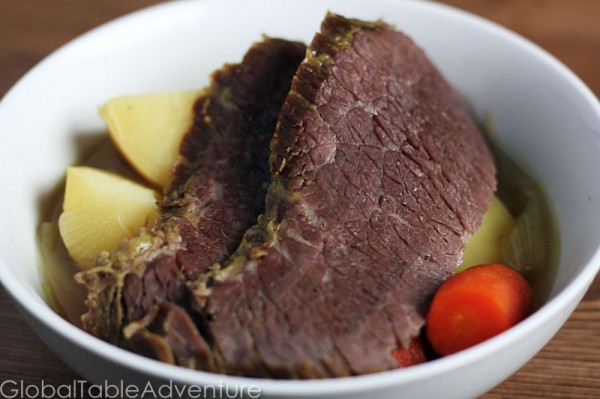
What I liked most about this dish:
Corned beef can be rather bland, but curry really adds dimension and warmth. I found it to be a supremely comforting dish.
What I liked least about this dish:
My mouth felt like it had been brined by the time I was done eating. Corned beef is meant to be salty, but I think I’m rather sensitive to it. Amazingly Mr. Picky, a.k.a. Mr I-Love-Salt, felt the same way. The package said that one portion was 56% of the daily recommended value. Yikes.
Homemade curry powder [Recipe]

What I liked most about this dish:
I had a good time adjusting the spices to make a curry that works for me. This one is floral and mild – just right for Ava’s young taste buds, as well as my own, sensitive ones. It really is all-purpose.
What I liked least about this dish:
I would have liked to take the time and grind each spice separately. This ensures a more even powder. Overall though, I think the time saved was worth it.
Fijian Coconut Ceviche (Kokoda) [Recipe]
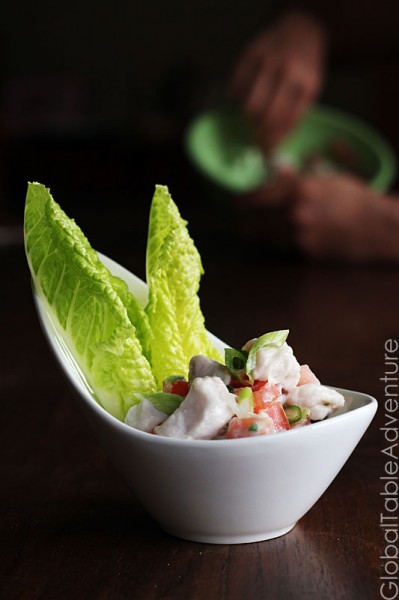
What I liked most about this dish:
This was my first time making ceviche. I loved seeing fish transform from translucent to opaque white (the center remains uncooked though). I though the tart lime juice with the creamy coconut milk was a great compliment to the fish.
What I liked least about this dish:
The mixture creates a lot of juices (although Fijians do enjoy them). I had a tendency to drain off the liquid with a slotted spoon. Mr Picky thought it was okay and, in case you’re curious, I did make him taste it first. I figured if he can handle ceviche, I certainly had no business being squeamish about it.
Polynesian Bananas in sweet coconut milk [Recipe]
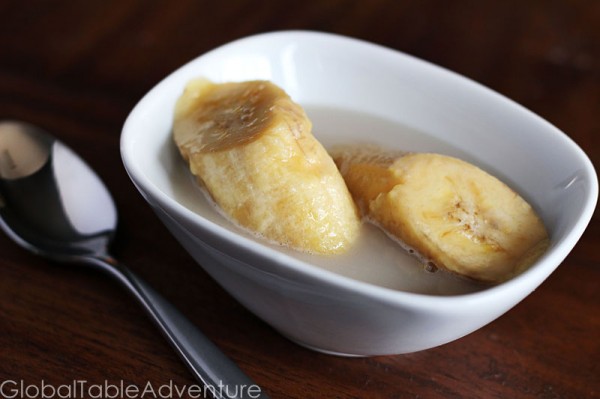
What I liked most about this dish:
Sweet bananas and coconut milk are a great match. There was enough milk to cook a lot of bananas this way. Mr Picky called this “Almost awesome.”
What I liked least about this dish:
The rich coconut milk was intense for our western taste buds. I think I’d go for half coconut milk and half regular milk next time… Mr Picky said that would probably put the dessert over, into the “awesome” realm.
Ava’s Corner


